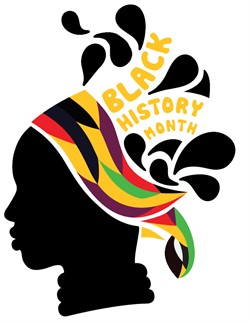In addition to researching and
summarizing different articles, the Biology Society thought it would be
beneficial for our readers to hear information about Post-traumatic Stress
Disorder (PTSD) from an expert on campus. Below is an account of our chat with Judith
W. Preston at the Spartan Health Center. She is a licensed professional counselor.
Alexandra Boone asked the questions. She is a junior at Norfolk State
University (NSU) and the Mentorship/Development Chair of the NSU Biology
Society.
Alexandra
Boone: What is PTSD? Are there different types?
Preston: PTSD is Post Traumatic
Stress Disorder. There are not exactly different types but the severity of PTSD
in patients does vary.
Alexandra
Boone: Who is usually affected by this condition?
Preston: Individuals that see,
hear, or experience a traumatic event. Examples include: hearing a gun shot, a
child experiencing domestic violence in the home, sexual trauma, domestic
violence, being in a bad car accident.
Alexandra
Boone: What are the symptoms? And treatments?
Preston: Reliving the experience
over and over again. PTSD patients may experience flash backs and nightmares.
PTSD patients often have triggers and avoid certain activities that led to the
traumatic event. Example: Staying at home due to living through a natural disaster.
Having negative thoughts about yourself and blaming yourself for the traumatic
event occurring. Difficulty sleeping, concentrating, being aggressive due to
always being on edge. With kids, they may regress in social or personal
development. Example: returning to bed bedwetting or withdrawing from social
activities. PTSD can also lead to substance abuse because the patient is trying
to either forget, escape, or feel better about the situation.
Treatment: First, patients need
to be assessed by a professional such as a psychiatrist, licensed professional counselor,
licensed clinical social worker, psychologist, or primary care physician. Psychotherapy
is used as treatment. Cognitive behavioral therapy which focuses on the
connection between a patient’s feelings, thoughts and behaviors. EMDR – Eye
Movement Desensitization Reprocessing, is a therapy that primarily treats
trauma through reprocessing the trauma in a safe setting. Medication is also
often used to treat PTSD.
Alexandra
Boone: How does one know when they are officially cured or is that not possible
for this condition?
Preston: The reduction of symptoms will determine when
exactly the patient is better, but it can resurface if triggered.
Alexandra
Boone: Are there any disparities among minorities or other specific groups as
far as awareness and/or seeking help?
Preston: Yes, the stigma of
mental health is a big disparity. Minorities may also not seek mental health services
because of bad experiences, family may not believe in therapy and may prefer to
turn to their church for support, lack of immediate access or not having health
insurance.
Alexandra
Boone: Working here at the NSU counseling center are there many cases? How do
you think PTSD affects us specifically? What are the ways we can get help and
what can the counseling center do for us?
Preston: Yes, there are all
types of mental health cases on NSU’s campus ranging from PTSD to depression,
and anxiety. Students may struggle with continuing issues from before attending
NSU and during their time here. PTSD affects NSU students same as it would
affect many other college students. PTSD affects students if they experience traumatic
events that could happen on campus such as hearing gun shots, watching someone
get robbed or beaten, or even something more personal that they were dealing with
before they came to NSU. The Counseling Center offers free mental health
services to NSU students. It is located in Room 312 in the Student Services
Building. Information shared is confidential and your concerns/problems are
taken seriously. There is no shame in seeking help when it’s needed.
Alexandra
Boone: Well on behalf of the Biology Society Thank you so much for providing us
with this information.
Preston: No problem. If you need
anything else do not hesitate to ask.
END OF INTERVIEW – Behold
Biology NSU!


